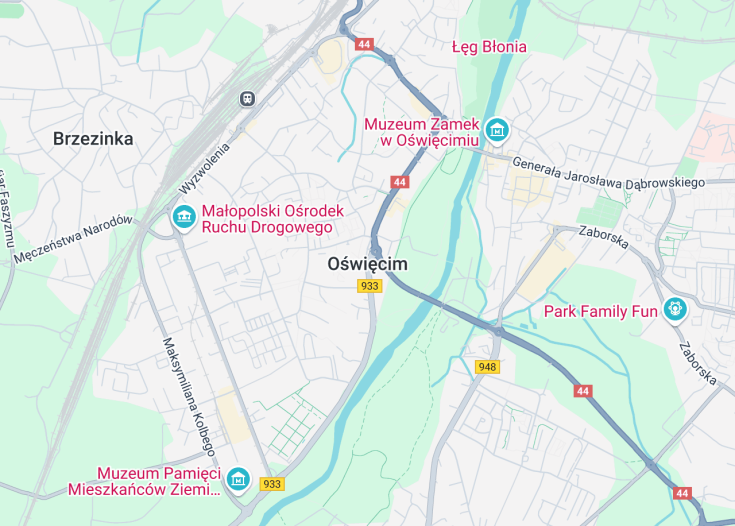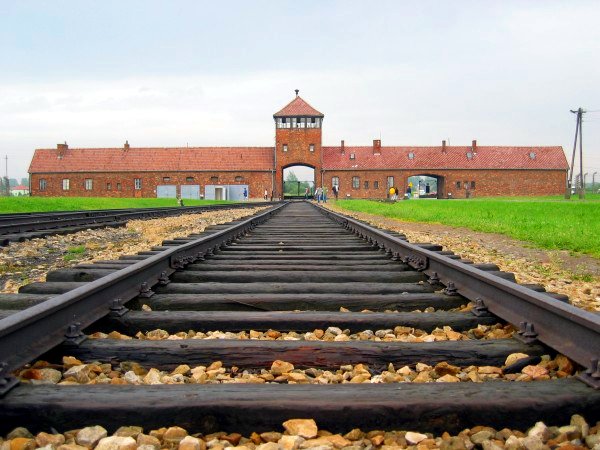Oświęcim, a town in Poland rich in poignant history, is predominantly known for the Auschwitz-Birkenau Memorial and Museum. Originally a place of profound suffering and tragedy during World War II, today it stands as a stark reminder and a powerful monument to the victims of the Holocaust. Visitors to Oświęcim can explore this deeply moving site, along with its well-preserved medieval architecture and local cultural museums, offering a meaningful understanding of both human resilience and remembrance.
Before visiting Auschwitz-Birkenau, book your entry in advance online to ensure access, as visitor numbers are limited each day for preservation reasons.
For a reflective visit, consider joining a guided tour at the museum, which can provide deeper historical context and emotional insight into the site’s complex past.
Top things to do & see in Oświęcim
Select the following sights and activities to discover best tickets and tours available in Oświęcim.
Oświęcim: Gateway to the Past
| Country | Poland |
| Time in Oświęcim | GMT+2 |
| Language spoken | Polish |
| Population | 39,800 (source: Local Government Records) |
| Currency | Polish Zloty (PLN zł) |
| Airports |
|
Oświęcim, a town with a profound historical significance due to its location near the former Auschwitz-Birkenau concentration camp, captures a solemn chapter in human history. Constituting a site of immense educational and commemorative importance, it attracts visitors from around the globe looking to understand the depth of human tragedy and the essence of resilience and remembrance. Despite its poignant past, Oświęcim is more than its historical scars. It is a community marked by its picturesque environment, cultural richness, and an enduring spirit of hope and reconciliation.
Where is Oświęcim?
Oświęcim is situated in southern Poland, close to the Vistula River, surrounded by the serene landscapes of Lesser Poland.
Distances:
| Route | Distance by car | Time by car |
|---|---|---|
| Krakow to Oświęcim | 66 km | 1 hour 10 mins |
| Katowice to Oświęcim | 62 km | 1 hour |
| Warsaw to Oświęcim | 317 km | 4 hours 10 mins |
What is Oświęcim famous for?
Oświęcim is globally recognized for being the location of the Auschwitz-Birkenau concentration camp, a poignant symbol of the Holocaust and a UNESCO World Heritage site, attracting scholars and visitors keen to remember and learn from the atrocities of World War II.
History
The history of Oświęcim, a small town in Poland, is both rich and poignant, marked significantly by its role during World War II but also possessing a deeper, centuries-old past.
Pre-12th Century: Early Settlements
Archaeological findings suggest that the area around Oświęcim was inhabited by various tribes during the Stone and Bronze ages. The strategic location near the confluence of the rivers provided fertile soil and an advantageous position for early settlers.
12th Century-14th Century: Formation and Development
Oświęcim was officially recognized as a town in the early 12th century. Over the ensuing centuries, it became a crucial center for trade and commerce, owing to its location on major trade routes across Europe. The construction of significant buildings, like the Oświęcim Castle in the 13th century, underscored its growing importance.
15th Century-17th Century: Renaissance and Conflicts
The Renaissance brought about significant cultural and architectural development in Oświęcim. However, the town was not spared from the conflicts of the period, facing several invasions and battles, notably during the Swedish Deluge in the mid-17th century when it suffered substantial destruction.
18th Century-19th Century: Partitions and Industrialization
Following the partitions of Poland, Oświęcim found itself under Austrian rule, which influenced its architectural and cultural landscape. The 19th century saw the rise of industrialization in the area, which brought economic growth and demographic changes, including a significant Jewish population.
20th Century: The World Wars and Beyond
The most notable and tragic chapter in Oświęcim’s history is its transformation during World War II when the Nazis established the Auschwitz-Birkenau concentration camp complex here. Post-war, the town became a symbol of Holocaust remembrance. Moving beyond its painful past, Oświęcim now focuses on peace and reconciliation, housing the Auschwitz-Birkenau State Museum. The late 20th and 21st centuries have seen efforts to revive the town’s other historical aspects and promote cultural heritage tourism.
Visit Oświęcim
What to see and do in Oświęcim
Visiting Oświęcim offers a profound experience deeply rooted in historical and cultural education. Top attractions include:
- The Auschwitz-Birkenau State Museum: This memorial site provides an essential look at the atrocities of World War II and serves as a vital educational tool.
- Oświęcim Castle: Dating back to the 13th century, this historic castle offers insights into the region’s medieval past.
- St. Mary’s Church: A beautiful example of Gothic architecture, offering a peaceful contrast to the somber history of the town.
- Jewish Museum and Synagogue: Located in the Jewish district, this museum is crucial for understanding the pre-war Jewish life in Oświęcim.
Annual Events in Oświęcim
Oświęcim hosts several events aimed at promoting peace and cultural understanding. Notable among them is the “Life Festival Oświęcim,” held annually in June, which features music and cultural activities that bring together diverse audiences and artists to foster dialogue and reconciliation.
Best time to visit Oświęcim
The best times to visit Oświęcim are late spring (May and June) and early autumn (September and October), when the weather is mild and conducive for exploring the historical sites. Avoiding the harsh winter months is advisable due to cold temperatures and potential snow.
Is Oświęcim worth visiting?
Oświęcim is unquestionably worth visiting, not only as a site of significant historical importance but also as a beacon of remembrance and peace. The Auschwitz-Birkenau Memorial and Museum offers an indispensable look at human history’s darkest times, compelling visitors to reflect on the issues of crime, humanity, and tolerance. However, the overall experience can be emotionally taxing, and the grim history may not appeal to all. Additionally, the small size of the town doesn’t offer much in terms of typical tourist attractions, which might deter those looking for a more traditional travel experience.











